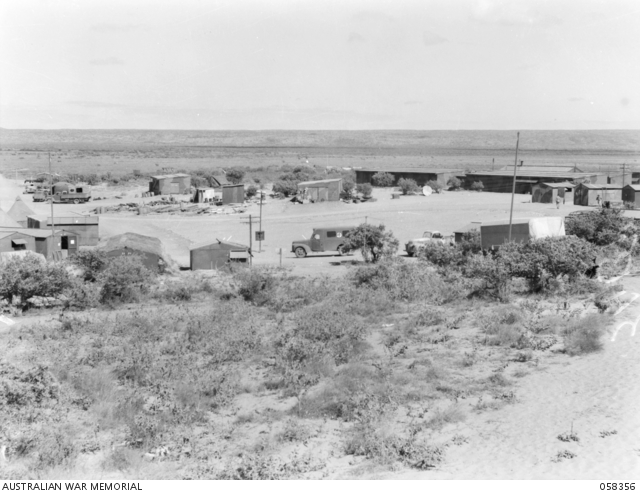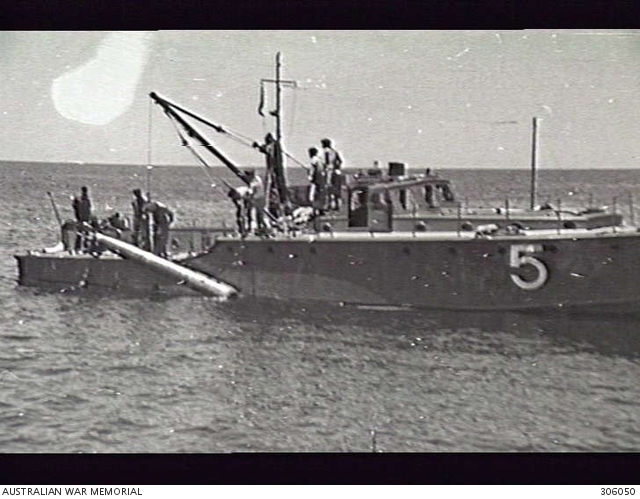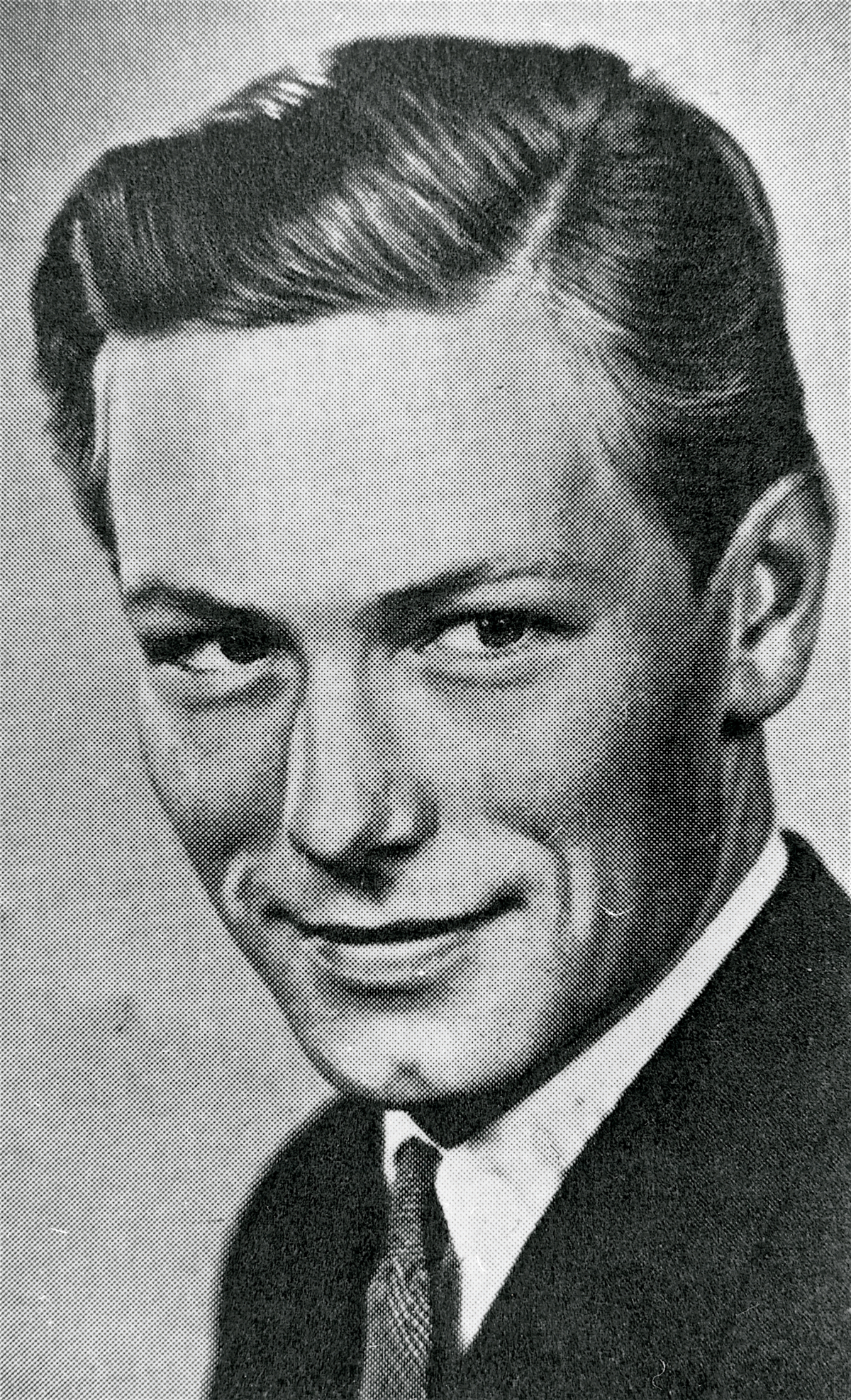LAC Mogens Bruun Jensen
(1925 - n.a. )
Profile
LAC Mogens Bruun Jensen served as Motor Boat Crew in the RAAF from 1942-1945. Jensen’s twin brother, Gunnar Bruun Jensen, was shot by the Germans in December 1944. He was a member of the Danish resistance movement. Jensen was discharged in June 1945 to allow him to return to Denmark, but missed the memorial service.
Mogens Bruun Jensen was born on 18 March 1925 in Glamsbjerg, Denmark, the son of Johannes Marius Jensen and Else Marie Bruun.[1] Jensen was a twin and he was raised with his twin brother Gunnar and two younger sisters, Kirsten and Erna.
At some point, the family moved to Odense, where Jensen’s father was employed as a gatekeeper at the Odense Steel Shipyard. His brother Gunnar was employed here as well later on.[2] Jensen attended Sct. Hans School, which is situated in the areas new the shipyard, and seems to have left after ninth grade.
Jensen, perhaps fascinated by the large merchant vessels at the nearby shipyard, went to sea in 1939. The sources includes no information about when and where he signed on, but it could have been in Copenhagen from where the shipped arrived at on 16 June, before continuing to Oslo.[3] He arrived, thus, in Sydney, Australia as a crew member—possibly mess boy—of the Norwegian ship SS Teneriffa.[4] He deserted the ship before it returned home.[5] The ship sailed from Sydney for Newport, Antwerp and Oslo passing Melbourne and Fremantle on the way. This corresponds with the fact, that sources states that he reached Western Australia on 26 December 1939. It is not clear from the sources if he deserted the this in Sydney or later on.
He worked as a farm hand in Brookhampton until June 1943. He listed in the local Volunteer Defence Corps (VDC) in Donnybrook, Western Australia, on 7 June 1942. He served as a private in the 5th Battalion (W70399).[6] The Volunteer Defence Corps (VDC) was a part time, unpaid, volunteer service, modelled on the British Home Guard. The force was expanded by the Government in February 1942, following the outbreak of the Pacific War. Membership was open to men aged between 18 and 60.[7] In fact, Jensen was only aged 17 when he enlisted, but he added a year to his age, byt stating that he was born in 1924.
Royal Australian Air Force
He was discharged from the VDC on 18 June 1943 as he apply to become a member of the RAAF. At the same time et seams, he moved to East Fremantle, and by September 1943, he worked as a foundry worker for the Furphy Brothers in Grey Street, Fremantle. The Furphy family had been active in the foundry business for many years, but the foundry had been sold to Eric Hogg in 1939.[8]
Jensen applied for enlistment as an airman in 28 September 1943. He was interviewed for service as aircrew, but was not accepted. One of the interviewing officers summarized the interview as follows:
Educationally unsuitable for Air Crew; the applicant is under a disadvantage in attempting the aptitude test but is generally lacking in adaptability to master the Course. Not recommended.
And another had come to the same conclusion:
Pleasant willing but does not appear to have the drive nor mentality to cope with Air Crew Course. Appears to have been a drifter since early age - doubtful as to capacity to settle down. Not recommended.
He indicated a desire to serve as Motor Boat Crew himself, and for this trade he was assessed ‘suitable’. He had ‘good knowledge of general seamanship and marine craft.,’ noted the examining officer.
Motor Boat Crew
Jensen enlists in the RAAF at 4 Recruiting Centre in Perth on 16 October 1943 as MBC with the rank of Aircraftman I.[9] The MBC was the basic trade employed on all marine craft in the British and Commonwealth air forces. They undertook all general duties aboard RAF marine craft such as mooring, steering, cooking, and assisting specialised staff with engine room duties, etc. He was posted to 4 Recruit Depot, where he followed and passed the 248 Recruit Drill Course from 16 October to 12 November 1943. About a week later, he was further posted.
Jensen was posted to and arrived at 4 Transportation and Movements Office in Perth, Western Australia, on 20 November 1943.[10] The role of the Transportation and Movement Offices were established to move large volumes and numbers of goods, equipment, and personnel by ship, rail and road during the war.
It is not clear from the sources, but it is presumed that Jensen was part of the Marine Section, which commenced running on a weekly schedule Fremantle to Jurien Bay and return with RAAF vessel 015.15 Princess Yolanda, a 50 feet long lugger and former fishing boat.[11] Whatever his task at the unit, he did not remain there for long; he departed the unit on 13 December 1943.[12] He was detached to 76 Operational Base Unit (OBU) with effect from the day of his arrival at this unit but was granted six days of embarkation leave.[13]
76 OBU at Exmouth
During the war the RAAF constructed a landing field on the western shore of Exmouth Gulf, Western Australia, about 1,000 km north of Perth. It was secret and codenamed ‘Potshot.’ The plan was for submarines operating out of Fremantle would be able to refuel from a floating fuel barge in the gulf. The intention was also to have Catalinas refueling at the case.[14] On 7 May 1943, 76 OBU was established to maintain the landing field. The unit served a vide variety of aircraft, and in June 1943 a Marine Section was established and the refueling launch and dinghy commissioned, thus enabling flying boats to be refueled.[15]
Jensen arrived at the unit on 10 January 1944 and remained there for eight months. Again, the specifics of his service are not known, apart from the generel description of the tasks above. Jensen was reclassified as leading aircraftman (group 3) with effect from 22 June 1944. He proceded on posting to RAAF Station Nowra with effect from his arrival at this unit, and he departed in the afternoon of 3 August 1944 . He was granted recreational leave from 5 to 19 August 1944.[16]

Mogens travelled the ca. 5,000 km from Exmouth to his new unit. The Marine Section was located near the HMAS Creswell at Jervis Bay, a satellite for the nearby Nowra, south of Sydney. He arrived at the unit on 28 august 1944 just before a reorganisation of the units in the area.[17] During August, he had enjoyed 15 days of recreational leave.
The Base Torpedo Unit had until then been a part of RAAF Station Nowra. As of 15 September 1944, the Headquarters of RAAF Station Nowra ceased to exist, and the Base Torpedo Unit carried out all essential functions.[18] Consequently, Jensen was posted from RAAF Station Nowra to Base Torpedo Unit on 15 September 1944.[19]
The Marine Section operated torpedo recovery boats off shore, when Beaufort bombers carried out torpedo bombing exercises. To retrieve the practice torpedoes used for the exercises, the crews had to be at sea monitoring the actual dropping and then follow the wake. There was only a limited amount of time to locate and retrieve the torpedo as a devise ensured that the torpedo would sink if not retrieved within a certain time. The boats used for this purpose could carry up to five torpedoes in the stern.
[A] great deal of skill was required by the Crew to first, capture and attach a line to the torpedo, then more lines and finally hoisting it on board. This was very dangerous work both to the Crew and the boat especially when a sea was running.[20]
In addition to the torpedo recovery the unit also functioned in a Air Sea Rescue role when seaplanes were operating from St. George's Basin, and as well when all types of aircraft operated from nearby RAAF Bases.
Jensen was granted six days of pre-embarkation leave from 9 March to 3 April 1945,[21] and was posted to 2 Personnel Depot at RAAF Bradfield Park in Sydney, where he arrived on 9 April 1945.

Envisioning that the war in Europe was coming to an end, and hereby also the liberation of Denmark from German occupation nearby, he applied for a discharge on 16 April 1945. In the application he motivated his reasons as follows
I herewith make application for Discharge from the Royal Australian Air Force for the purpose of going back home to my own country, Denmark. It will be readily understood the work that will engage me in setting up my own people at home. Since leaving home in 1939 I have travelled extensively on passenger liners as a Mess Steward until 1940 when I took up residence in Australia working on the land until joining up in the R.A.A.F. in 1943. Attached is a letter from the Swedish Consul General intimating that a vacancy is offering on Swedish liners. This will be my means of reaching hime. I would appreciate your careful and timely consideration to this application.
The Swedish consul had arranged for Jensen to be able to sign on the MT Pan Gothia as able seaman the following week.
Jensen’s application was recommended by Wing Commander Sewell at 2 Personnel Depot. It was forwarded to HQ, 2 (Training) Group, for considerations on 19 April 1945. The application was recommended by the AOC 2 (Training) Group and forwarded to the Air Board for decision on 26 April 1945.
In Jensen’s Airman’s Record Sheet (Active Service - Overseas) (Form P/P.75) it is recorded, without posting dates, that he posted to 3 Reserve Personnel Pool for a period before discharge. This unit was based at Morotai Island—part of the Maluku Islands in Netherlands East India.[22] On 10 May, 2 Personnel Depot sent an urgent message to HQ 2 Training Group to enquire if Jensen was to proceed on posting to 3 RPP as his application for discharge was pending. They were instructed to by postagram of 11 May 1945 instructing Jensen to be held at 2 Personnel Deport awaiting further advise. The posting was cancelled.
Jensen was discharged on 28 June 1945 ‘to facilitate return to Denmark.’ The Pan Gothia had long gone, sailing from Sydney on 8 June,[23] and it is not clear from the sources how and when, he returned to Denmark.
Brother killed as resistance fighter
On 17 July 1945, a memorial service was held at the Assistens cemetery in Odense in honour of Jensen’s brother Gunnar and his fellow resistance fighter Otto Raarup. The two were killed by the German Hilfspolizei or HIPO on 23 December 1944. Gunnar had joined the resistance group BOPA—on of the largest and most well-known Danish resistance groups—en the early summer 1944, but had even been involved in illegal activities before that in such a was that the had had to flee Copenhagen and live with his family in Odense for a while. Raarup and Gunnar was recognised at a bar in Copenhagen on 23 December 1944. At first they managed to escape, but they were discovered and shot down in central Copenhagen.[24]

Jensen did not reach Denmark before his brother was buried. It is probable that he did not know of his brother’s death before he returned to Denmark. He was awarded the King Christian Memorial Medal for participation in the war 1940-45. In 1947, is the Danish Foreign Ministry gathered information on Danes, who were eligible for the medal, the Department of Air emphasized to Jensen, that according to the practice followed by the Australian Forces, he would be able to receive either the Danish medal or the War Medal. Nevertheless, it seems like he was awarded both in the end. Mogens Bruun Jensen applied for naturalization in 1950.
Endnotes
[1] DNA: Parish register, Køng Sogn.
[2] DNA: 1940 Census of Denmark.
[3] NAA: BT 389/43/151.
[4] NAA: A9301, 83876, Mogens Bruun Jensen.
[5] NAA: PP302/1, WA17727.
[6] Volunteer Defence Corps (WA), Virtual War Memorial, https://vwma.org.au/explore/units/3405 (accessed on 17 April 2022).
[7] Ibid.
[8] Foundry, 12 Grey Street (place 20694, InHerit, Government of Western Australia, http://inherit.stateheritage.wa.gov.au/Public/ (accessed on 17 April 2022).
[9] A9301, 83876 (service record of Mogens Bruun Jensen). Unless otherwise stated all details on his service is based on this source.
[10] NAA: A10605, 1067/1.
[11] Jubbs, L. R. (1997). Royal Australian Air Force Marine Section.
[12] NAA: A10605, 622/4.
[13] NAA: A10605, 1067/1.
[14] Jubbs, op.cit., p. 263f.
[15] RAAF Historical Section (1995). Units of the Royal Australian Air Force: A Concise. Volume 1: Introduction, bases, supporting organisations, p. 268-70.
[16] NAA: A10605/622/4.
[17] NAA: A10605, 219/2 - Volume 2 - Base Torpedo Unit - Personnel Occurrence Report 1/1944 - 23/1945.
[18] NAA: A9186, 304 - RAAF Unit History sheets (Form A50) [Operations Record Book - Forms A50 and A51] Base Torpedo Units 1, 2 and 3 Aug 42 - Sep 45.
[19] NAA: A10605, 219/2 - Volume 2 - Base Torpedo Unit - Personnel Occurrence Report 1/1944 - 23/1945.
[20] Jubbs (1997). op.cit., p. 275.
[21] NAA: A10605, 219/2 - Volume 2 - Base Torpedo Unit - Personnel Occurrence Report 1/1944 - 23/1945.
[22] RAAF Historical Section (1995). Units of the Royal Australian Air Force: A Concise. Volume 9: Ancillary units, p. 147.
[23] NA: BT 389/41/40.
[24] Frihedsmuseets modstandsdatabase, http://modstand.natmus.dk/Person.aspx?8920 (accessed on 20 April 2022).